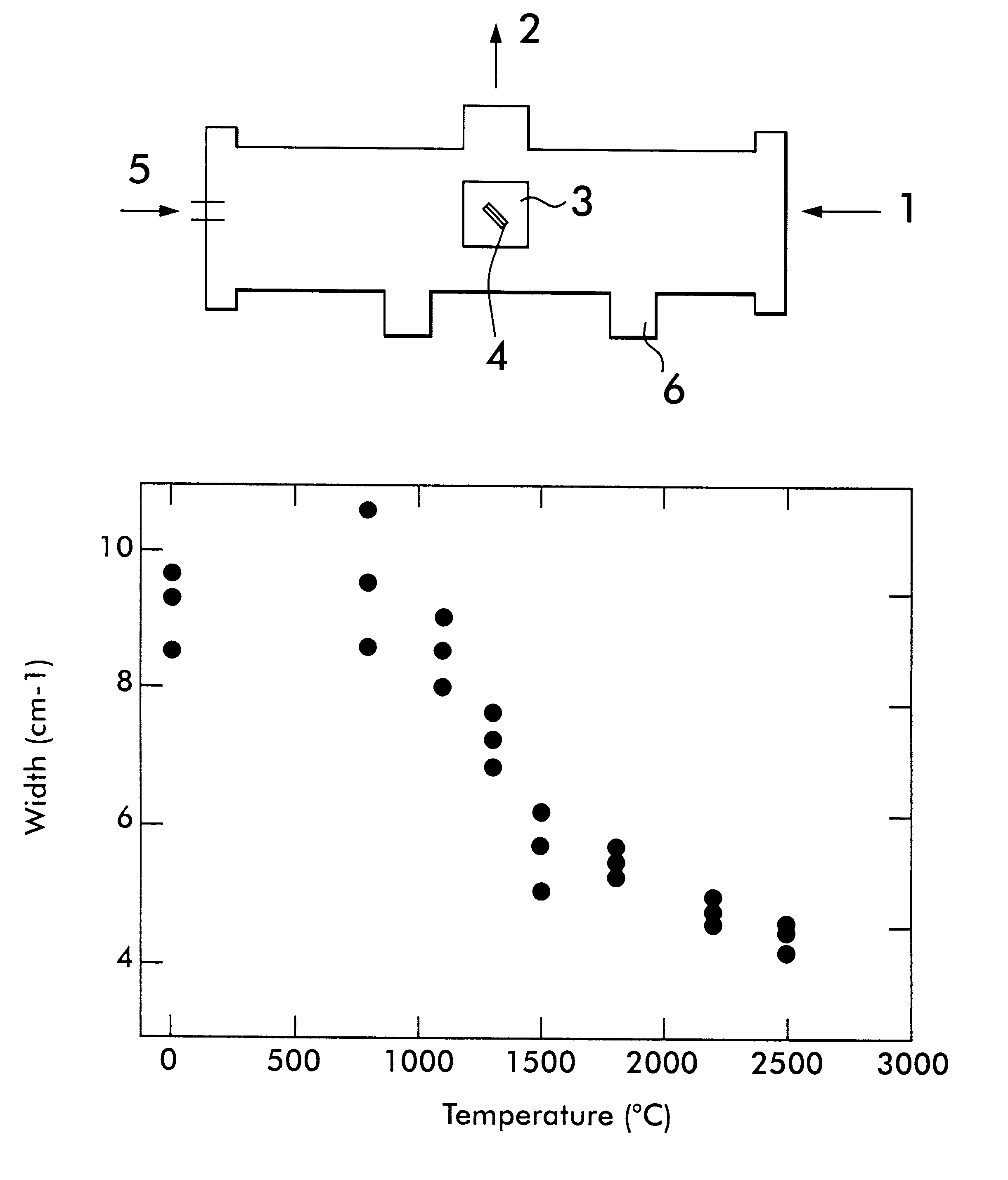Diamond thin film or the like, method for forming and modifying the thin film, and method for processing the thin film
a technology of diamond thin film and a processing method, which is applied in the field of diamond thin film or the like, method for processing the thin film, and method for forming and modifying the thin film, which can solve the problems of not completely well understood, difficult to achieve stable and reproducible production with high efficiency, and complicated diamond formation mechanism, etc., to achieve the effect of eliminating or reducing strain, defects, color
- Summary
- Abstract
- Description
- Claims
- Application Information
AI Technical Summary
Benefits of technology
Problems solved by technology
Method used
Image
Examples
example 2
A free-standing diamond film having a thickness of greater than 100 microns and a polycrystal structure, and a free standing diamond film having a thickness of 500 microns and a polycrystal portion of preferred orientation were obtained. Irregularities which formed on the final growth face of the films were flattened, and the final growth surfaces were irradiated and heated by a microwave of 60 GHz. The modification of the films were carried out in an atmosphere containing an Argon gas flow, and the heating temperature was 800.degree. C.
Tables 1 and 2, below, each show the relationship between the microwave outputs and the temperature (arrival temperature) being attainable with the film, ie. the same microwave power was irradiated twice against the diamond film.
The diamond thin film is heated to 800.degree. C. and is then subjected to a second separate irradiation using the same conditions. It was found that the arrival temperature is lower in the second irradiation. For instance, t...
example 3
In this example, a diamond thin film or the like was subject to microwave irradiation of 1 to 500 GHz and, at the same time, one or more gases selected from carbon, nitrogen, and boron supply source gases and gas containing semi-conductor elements were introduced. Thus, at the same time the diamond thin film or the like is being modified, a polycrystalline diamond thin film or the like, preferentially oriented polycrystalline film, single crystal thin film or a semiconductor thin film thereof is further deposited on the modified thin film element.
In a gas phase synthesizing process, as discussed above, non-diamond components are unavoidably generated in the diamond thin film. It has been found that the etching effect of atomic hydrogen generated by dissociation and activation of the carbon supply source gas (hydrocarbon / hydrogen based) generated in plasmas is effective to reduce this non-diamond component.
Therefore, in the present technique, in an attempt to qualify a polycrystallin...
example 4
A production example of a diamond based electronic device in which a part of the modified portion of the diamond thin film or the like is provided with semiconductor characteristics, is described below with respect to Example No. 4.
As in Example No. 3, a diamond thin film having a substrate is inserted into a microwave irradiation device, and a microwave was irradiated to the diamond thin film. At the same time, a carbon supply source and a gas containing Boron as a semiconductor element were introduced into the modifying atmosphere. The result was that a p-type diamond polycrystalline thin film, a preferentially oriented polycrystalline diamond thin film, and a single crystal film were further formed on the initially placed diamond thin film.
It was verified that the characteristics of the obtained semiconductor thin film provides a significant improvement due to the modification effect of microwave irradiation. In the foregoing, although an example of the diamond thin film formed o...
PUM
| Property | Measurement | Unit |
|---|---|---|
| thickness | aaaaa | aaaaa |
| wavelength | aaaaa | aaaaa |
| wavelength | aaaaa | aaaaa |
Abstract
Description
Claims
Application Information
 Login to View More
Login to View More - R&D
- Intellectual Property
- Life Sciences
- Materials
- Tech Scout
- Unparalleled Data Quality
- Higher Quality Content
- 60% Fewer Hallucinations
Browse by: Latest US Patents, China's latest patents, Technical Efficacy Thesaurus, Application Domain, Technology Topic, Popular Technical Reports.
© 2025 PatSnap. All rights reserved.Legal|Privacy policy|Modern Slavery Act Transparency Statement|Sitemap|About US| Contact US: help@patsnap.com


